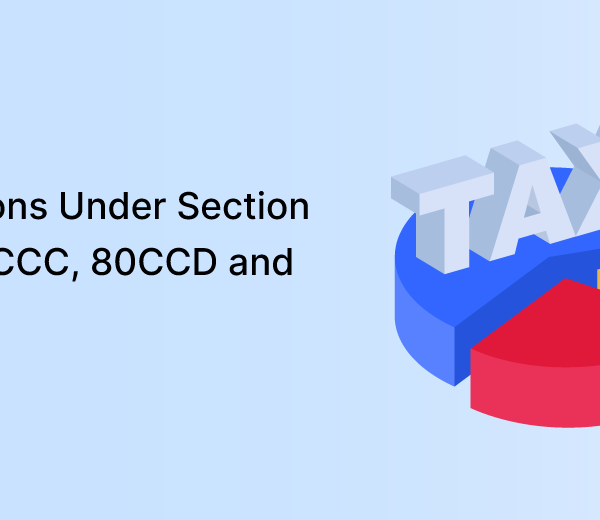When you combine both equity and debt funds, you get hybrid mutual funds. Debt funds are money market instruments that include commercial papers (CPs), treasury bills, nonconvertible debentures, government bonds, etc.
Equity funds are shares of a company traded in the stock market. Equity funds are generally considered high-risk and are preferred by people looking for wealth creation, but debt funds are low-risk and secure. Some debt funds even allow investment for one day to many years.
Hybrid funds are a valuable addition to any investment portfolio, especially for those who want returns from equity and debt instruments.
Investing in hybrid mutual funds gives the stability of debt assets and higher returns of equity funds. Another benefit here is the taxation rules for hybrid mutual funds.
Let’s look at the types and taxation rules for hybrid mutual funds
Sign up with Koshex to learn more about mutual fund investment.
Types of Hybrid Mutual Funds
Hybrid funds are classified based on asset allocation. These could be equity-oriented and debt oriented.
- Equity-Oriented Hybrid Funds
When an investor puts more than 65% of their money in equity assets, it becomes an equity-oriented fund. The rest of the money can be in debt and money market instruments. The equity can be in any sector, such as real estate, automobile, healthcare, etc.
- Aggressive Hybrid Funds
When an investor has put 65% to 80% of their assets in equity and other money market instruments, they are called aggressive hybrid funds. These funds are open-ended schemes with the potential to generate higher returns but are risker than conservative hybrid funds.
- Debt-Oriented Balanced Funds
If an investor allocates more than 65% of their funds to debt instruments, it becomes a debt-oriented fund. These could be debentures, bonds, government securities, treasury bills, and so on. Some parts of the fund could be cash and cash equivalents for liquidity. When investors put 75% to 90% of their assets in debt instruments, they are called conservative hybrid funds.
- Arbitrage Funds
To maximise returns, a fund manager buys stocks at a lower price in the market and sells at higher prices in another market. Arbitrage funds are considerably safer, but long-term capital gains are taxable like any equity fund. When there are not enough arbitrage opportunities, these funds might remain debt instruments or cash.
- Monthly Income Plans (MIP)
These are predominantly debt instruments. However, it does have 15-20% equities. Monthly Income Plans provide income in the form of dividends. Don’t be misguided by the name. The investors can choose a monthly, quarterly, half-yearly, or annual payout frequency.
- Dynamic Asset Allocation Funds
Dynamic asset allocation funds or balanced advantage funds are a type of investment with a mix of debt and equity funds on the current market movements. It is suitable for people looking for risk-adjusted returns over the long term.
Factors to Consider Before Investing in Hybrid Mutual Funds
- Risk Factor
Hybrid funds don’t provide complete security. They are relatively less risky than pure equity funds. However, investors need to re-balance their portfolios and keep checking the market from time to time.
- Return
The performance of underlying funds in the market affects their Net Asset Value (NAV). When investing, one should look for hybrid funds with low expense ratios. It can result in higher returns for investors.
- Tax on Gains
If the long-term equity capital gains are over Rs.1 lakh, a 10% tax will be levied. In contrast, short-term capital gains on equity are taxed at 15%. Profits from the debt-oriented hybrid funds are taxed like any other debt fund. The gains are added to the investor’s net income, which is later taxed based on the income slab the investor falls into. Long-term capital gains from debt are taxable at 20% after indexation. And without the benefit of indexation, it is taxed at 10%.
- Financial Goals
One can meet their financial requirements by investing in hybrid mutual funds. The goals could be funding education, buying a car, or a home. Young adults and senior citizens, including pensioners, invest in hybrid mutual funds to boost their income. Since these have a lower risk, people approaching retirement can also invest in hybrid mutual funds.
Investment in mutual funds involves investment risks such as trading volumes, settlement, liquidity, and default risks, including the possible loss of principal.
Hence, it is recommended to read all scheme-related documents carefully before investing.
Taxation Rules for Hybrid Mutual Funds
When the hybrid mutual funds are equity dominating, that is, more than 65% of the funds are allocated in equity instruments, then it is taxed as equity funds. While in the case of less than 65% equity, it is taxed as debt funds.
Equity-oriented funds held for 12 months or less are called short-term capital assets. And if it is held for more than 12 months, they are called a long-term capital asset.
Tax rules under Income Tax Act for Capital Gains:
| Short-Term Capital Gain | Non-equity funds | Taxed as normal rates of tax applicable to the assessee |
| Short-Term Capital Gain | Equity funds | 15% on redemption of units |
| Long-Term Capital Gain | Non-equity funds | 20% with indexation |
| Long-Term Capital Gain | Equity funds | 10% |
The Bottomline
Investing in hybrid funds is riskier than debt funds but relatively safer than equity funds. Hybrid mutual funds offer more significant returns than debt funds, which makes them a preferable bet for low-risk investors.
Young investors tend to opt for hybrid funds as they have the security of debt funds. Hybrid funds offer safety, income, and higher returns. They add diversification to the investor’s portfolio because of multiple asset classes.
This also means the investor can enjoy the advantages each asset class has to offer. To boost your income through investments and other finance-related queries or to find a fund manager, you can sign up with Koshex today.
FAQs
What are the categories of hybrid mutual funds?
Hybrid mutual funds can be categorised into three classes. These are equity, debt and hybrid. These can be further classified into six types: conservative hybrid funds, balanced/aggressive hybrid funds, dynamic asset allocation funds or balanced advantage funds, multi-asset allocation funds, equity savings funds, and arbitrage funds.









Leave a Comment